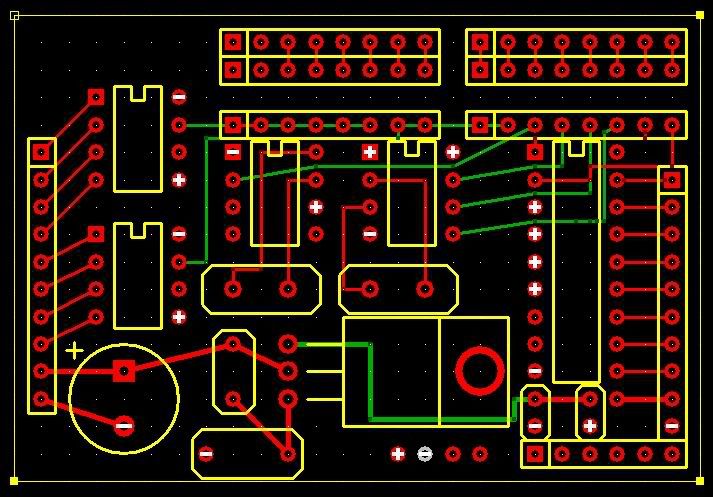Mainly, it was meant to prove the viability of using DIY, Open Source devices for using in wireless sensor networks. We needed to prove to the group of advisors that you really could build small and cheap devices that were just as effective, easy to program, and more robust as they did exactly what you wanted.
I know that I made a few mistakes on the board design (I used FreePCB instead of Eagle because it more clearly outlined how this could be made on protoboard for testing). For instance, I totally forgot pull up resistors on the Dallas 1-wire (you can fit these on the boards though, so no big deal). Also included in the DL is CODE for basically all of the components.
This is a “shield” that is designed to fit directly on top of an Arduino board (standard). Features of the board are:
– Atmega 8-bit core – 3.3v or 5V compatible or any other pinout compatible processor
– MCP23008 – I/O port expander (allows you to hookup many more I/O with a buffer)
– You may choose from two different RTC’s based on what your needs are (DS1302 or DS2417) each with independent crystals in case you need to clock both your ATMega and some sort of sensor or depending on what your needs are (DS2417 is less accurate, but less power).
– Designed to be able to be built by inexperienced builders (all through-hole parts)
– 2x DS2450 Quad A/D Converters with up to 16 bit-depth configurable (1-16 bit). Basically allows you up to 8 channels of 16-bit A/D which is a common need in order to measure pressure, temp, and flex sensors.
– On-board configurable PSU – allows you immense power flexibility. You can take power from the mainboard and regulate out down for an external sensor, power from the mainboard to power the sensor board, take power in from an external source (up to 18v) and bring to 5v for the sensor and mainboard, etc. Made possible by an LM317 using a trimpot and lots of highly configurable jumpers.
Download and improve it HERE – I know its very rough.
BTW guys, had no time to get the boards done for the amp this weekend as I was reading and writing papers for someone. Ah’-hem.


1 Comment
andy · December 2, 2016 at 5:46 PM
“file has expired” 🙁
The DS2450 seems not very popular. Any idea why?